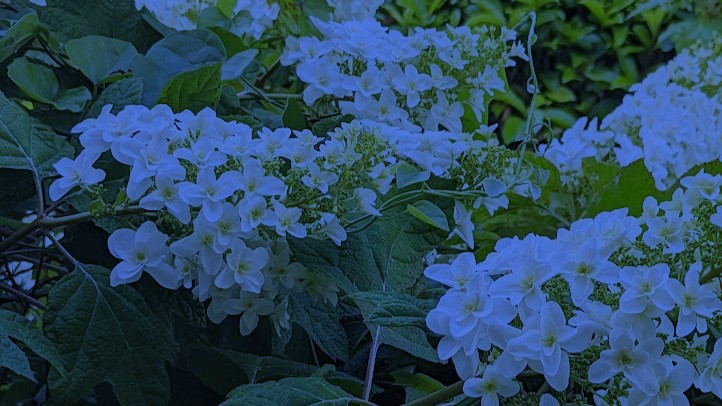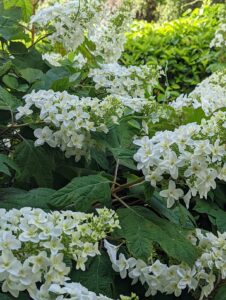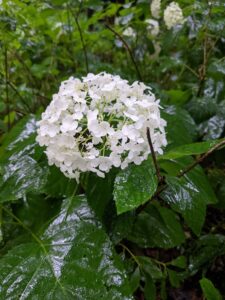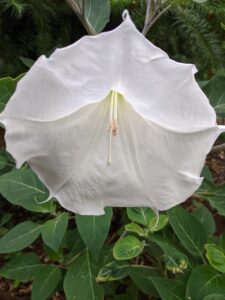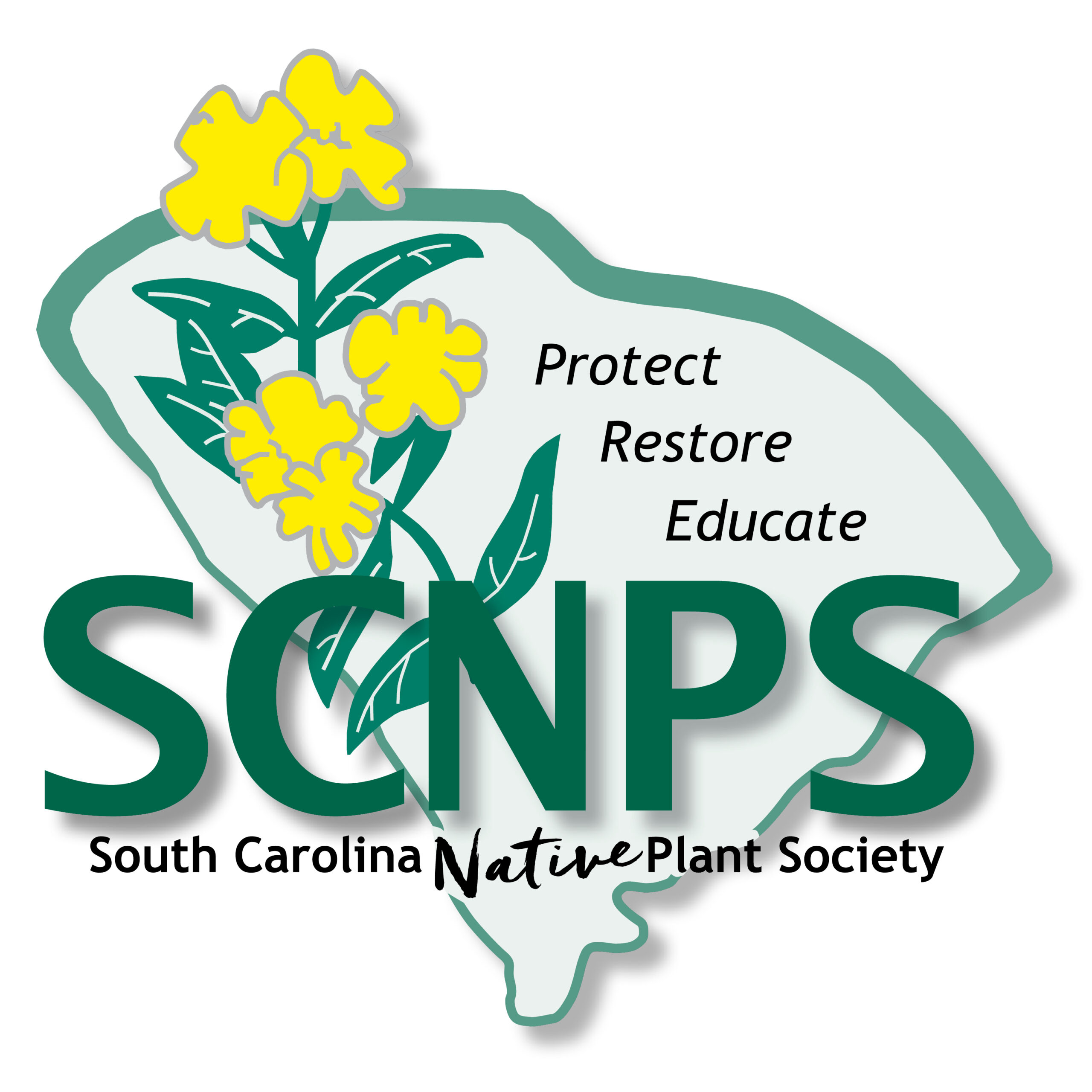by Sue Watts
When I was about fourteen, I begged my parents to visit Sissinghurst Castle in Kent, UK. I was fascinated by Vita Sackville-West’s famous White Garden — a garden designed to take center stage after the sun had set. I was not disappointed. The monochrome garden was beautiful in the daytime, but, of course, the castle closed at dusk and I couldn’t see it in its full moonlit glory.
However, one visitor once wrote about this special garden:
“The pearl glimmer at night, when the garden was designed to be seen — when walking home to bed after dinner, when the whites glow in the dark, floating free, and the greens absorb what light there is. Ideally, just then, a barn owl flies through.” ¹
A nocturnal or moon garden can offer soothing relief from our scorching summer days, plus support moths, fireflies, and other nighttime visitors. ² Like any garden, you’ll need to consider your soil, moisture, and sun or shade conditions. Vita Sackville-West’s original White Garden included plants from around the world, but here I share native plants that might feel right at home in your own moon garden. Choose them for their flower color (think whites, grays, lilacs, and soft pinks), fragrance, texture, and structure. ³
Background Plants
To create an evergreen backdrop punctuated with large, showy white flowers, think about our native magnolias. Magnolia blooms glow in the moonlight and their fragrance intensifies in the evening. Both the large southern magnolia (Magnolia grandiflora) and the smaller sweet bay magnolia (Magnolia virginiana) are great options — beetles and other pollinators will thank you.
Native hydrangeas can add a cloud of white, cream, or dusky pink flowers and silvery foliage. My oakleaf hydrangea (Hydrangea quercifolia) lines my porch with blooms that softly glow at night.
The smooth hydrangea (Hydrangea arborescens) flowers just as profusely and even hosts the Hydrangea sphinx moth (Darapsa versicolor).
Pops of Texture and Light: Tall Plants
Yucca’s spiky leaves and tall, luminous flower stalks add dramatic architecture and glow to your moon garden. Try Yucca filamentosa, native throughout South Carolina — the curly leaf filaments add extra texture. Yuccas and yucca moths (Tegeticula species) have a fascinating mutual dependency — they can’t survive without each other. ⁴
Add a candelabra effect with the white flower spires of Culver’s root (Veronicastrum virginicum). It thrives in sun to part shade and attracts bees and other pollinators. For shadier spots, black cohosh (Actaea racemosa) brings the same vertical drama and supports butterflies like the Spring Azure. Goat’s beard (Aruncus dioicus) adds a hazier look with its feathery flower plumes and fern-like foliage.
Shorter Plants and a Vine
The aptly named evening primrose (Oenothera species) comes alive at dusk — some species open so quickly you can watch them unfold! Oenothera speciosa, while not native to SC, adds delicate pink blooms to your night garden.
Though not native to SC, Datura (Datura wrightii) can be a striking addition, opening its trumpet-shaped white flowers just in time for its primary pollinators — hawk moths — and supports the Carolina Sphinx Moth (Manduca sexta).
Finally, the vining moonflower (Ipomea alba), while not native to SC, is native just south in Florida. Its glowing blooms attract nocturnal moths, and the leaves feed hummingbird and sphinx moths.
Add Some Nightlife
If you “leave the leaves” and skip chemicals, your moon garden will support fireflies that light up the landscape. Add a simple fountain or pond, and you’ll get frogs and toads to add a rhythmic soundtrack to your nights.
My fascination with night gardens is fully rekindled — I’m already planning more moon-loving plants for my yard… and I want that pond!
Learn more:
¹ Romantic Garden at Sissinghurst
² Moon Gardens for Night Pollinators
³ List of SC White Flowers
⁴ Yucca Moths

